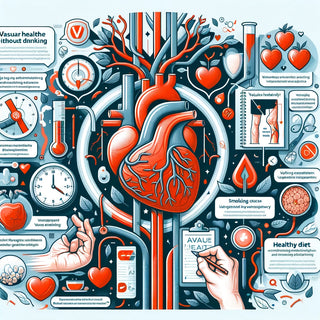Hey there, health enthusiasts! If you've been navigating the choppy waters of the internet trying to understand Peripheral Vascular Disease (PVD), anchor right here! With a sprinkle of humor and decades of experience in vascular health, we're breaking down PVD in a way that won't require a medical dictionary. Keep up with us at Condition Directed Health for more insights into PVD and other health conditions.
What Exactly is PVD?
Let's simplify it: PVD refers to any disease or disorder of the circulatory system outside of the brain and heart. It's like the traffic jams of your body's highway system, but instead of cars, we're talking about blood flow through both your arteries and veins. When these pathways become narrowed or blocked, it can affect your limbs, especially your legs, leading to various symptoms. And yes, it includes both arterial issues, like Peripheral Artery Disease (PAD), and venous problems, such as venous insufficiency affecting deep and superficial veins.
What Causes PVD?
The most common culprit behind PVD is atherosclerosis, where plaque builds up in your arteries, narrowing them down. Imagine it as the unwelcome build-up in your kitchen pipes, but instead of calling a plumber, your body calls on you to make lifestyle changes. Factors like diabetes, smoking, and high blood pressure can also contribute to the development of PVD, turning it into a more complex issue.
How Can I Tell If I Have PVD?
Your body has its way of sending signals when something's amiss. Symptoms might include cramping or pain in your legs when walking or exercising, changes in skin color, a noticeable drop in temperature in one leg compared to the other, and sores or wounds that heal at a snail's pace. If you're experiencing any of these signs, it's your body's way of saying, "Hey, let's get this checked out."
Managing PVD at Home: Is it Possible?
Yes, and it starts with embracing a heart- and vein-healthy lifestyle. Quitting smoking is a non-negotiable start. Integrating regular exercise, adopting a balanced diet, and yes, wearing quality graded compression socks can make a world of difference. These socks aren't just a fashion statement; they're a functional accessory designed to help improve your blood flow.
When to Consult a Doctor?
If your legs are staging a protest through pain, discoloration, or non-healing sores, it's time to seek professional advice. Early intervention can significantly improve your quality of life and prevent complications.
Is There a Cure for PVD?
While we can't offer a magic cure, a combination of lifestyle changes, medications, and in some cases, surgery can manage the condition effectively. It's about managing symptoms and improving your vascular health to keep you moving.
What's the Long-Term Outlook?
With the right approach, many people with PVD lead active, fulfilling lives. The key is early detection, management, and staying on top of your vascular health.
